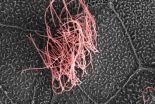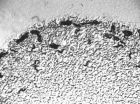(Press-News.org) AMHERST, Mass. – Chemical engineers at the University of Massachusetts Amherst, using a catalytic fast pyrolysis process that transforms renewable non-food biomass into petrochemicals, have developed a new catalyst that boosts the yield for five key "building blocks of the chemical industry" by 40 percent compared to previous methods. This sustainable production process, which holds the promise of being competitive and compatible with the current petroleum refinery infrastructure, has been tested and proven in a laboratory reactor, using wood as the feedstock, the research team says.
"We think that today we can be economically competitive with crude oil production," says research team leader George Huber, an associate professor of chemical engineering at UMass Amherst and one of the country's leading experts on catalytic pyrolysis.
Huber says his research team can take wood, grasses or other renewable biomass and create five of the six petrochemicals that serve as the building blocks for the chemical industry. They are benzene, toluene, and xylene, which are aromatics, and ethylene and propylene, which are olefins. Methanol is the only one of those six key petrochemicals not produced in that same single-step reaction.
"The ultimate significance of our research is that products of our green process can be used to make virtually all the petrochemical materials you can find. In addition, some of them can be blended into gasoline, diesel or jet fuel," says Huber.
The new process was outlined in a paper published in the Dec. 23, 2011 edition of the German Chemical Society's journal Angewandte Chemie. It was written by Huber, Wei Fan, assistant professor of chemical engineering, and graduate students Yu-Ting Cheng, Jungho Jae and Jian Shi.
"The whole name of the game is yield," says Huber. "The question is what amount of aromatics and olefins can be made from a given amount of biomass. Our paper demonstrates that with this new gallium-zeolite catalyst we can increase the yield of those products by 40 percent. This gets us much closer to the goal of catalytic fast pyrolysis being economically viable. And we can do it all in a renewable way."
The new production process has the potential to reduce or eliminate industry's reliance on fossil fuels to make industrial chemicals worth an estimated $400 billion annually, Huber says. The team's catalytic fast pyrolysis technology has been licensed to New York City's Anellotech, Inc., co-founded by Huber, which is scaling up the process to industrial size for introduction into the petrochemical industry.
In this single-step catalytic fast pyrolysis process, either wood, agricultural wastes, fast growing energy crops or other non-food biomass is fed into a fluidized-bed reactor, where this feedstock pyrolysizes, or decomposes due to heating, to form vapors. These biomass vapors then enter the team's new gallium-zeolite (Ga-ZSM-5) catalyst, inside the same reactor, which converts vapors into the aromatics and olefins. The economic advantages of the new process are that the reaction chemistry occurs in one single reactor, the process uses an inexpensive catalyst and that aromatics and olefins are produced that can be used easily in the existing petrochemical infrastructure.
Olefins and aromatics are the building blocks for a wide range of materials. Olefins are used in plastics, resins, fibers, elastomers, lubricants, synthetic rubber, gels and other industrial chemicals. Aromatics are used for making dyes, polyurethanes, plastics, synthetic fibers and more.
### END
UMass Amherst chemical engineers boost petrochemical output from biomass by 40 percent
2012-01-13
ELSE PRESS RELEASES FROM THIS DATE:
Hubble breaks new ground with discovery of distant exploding star
2012-01-13
NASA's Hubble Space Telescope has looked deep into the distant universe and detected the feeble glow of a star that exploded more than 9 billion years ago. The sighting is the first finding of an ambitious survey that will help astronomers place better constraints on the nature of dark energy, the mysterious repulsive force that is causing the universe to fly apart ever faster.
"For decades, astronomers have harnessed the power of Hubble to unravel the mysteries of the universe," said John Grunsfeld, associate administrator for NASA's Science Mission Directorate in Washington. ...
LSU professor discovers world's tiniest vertebrate
2012-01-13
BATON ROUGE – LSU's Chris Austin recently discovered two new species of frogs in New Guinea, one of which is now the world's tiniest known vertebrate, averaging only 7.7 millimeters in size – less than one-third of an inch. It ousts Paedocypris progenetica, an Indonesian fish averaging more than 8 millimeters, from the record. Austin, leading a team of scientists from the United States including LSU graduate student Eric Rittmeyer, made the discovery during a three-month long expedition to the island of New Guinea, the world's largest and tallest tropical island.
"It ...
New species of tiny frog is world's smallest vertebrate
2012-01-13
Researchers have found two new frog species in New Guinea, one of which is the new smallest known vertebrate on Earth. The results are reported in the Jan. 11 issue of the online journal PLoS ONE, and the team of researchers was led by Christopher Austin of Louisiana State University.
The new smallest vertebrate species is called Paedophryne amauensis, named after Amau Village in Papua New Guinea, where it was found. The adult body size for these frogs ranges from just 7.0 to 8.0 millimeters.
According to Dr. Austin, the discovery "is of considerable interest to biologists ...
Selectively stopping glutathione sensitizes brain tumors to chemotherapy
2012-01-13
Brain cancer cells are particularly resistant to chemotherapy — toxins enter the cells, but before the toxins can kill, cancer cells quickly pump them back outside. In fact, brain cancer cells are even better than healthy cells at cleaning themselves. This means that when hit with chemotherapy, healthy cells tend to die before brain cancer cells. Especially in the brain, killing healthy cells is bad.
Researchers at the University of Colorado Cancer Center have discovered a way to turn off the pumps — only in brain cancer cells and not in their healthy neighbors. Promising ...
Diet counts: Iron intake in teen years can impact brain in later life
2012-01-13
Iron is a popular topic in health news. Doctors prescribe it for medical reasons, and it's available over the counter as a dietary supplement. And while it's known that too little iron can result in cognitive problems, it's also known that too much promotes neurodegenerative diseases.
Now, researchers at UCLA have found that in addition to causing cognitive problems, a lack of iron early in life can affect the brain's physical structure as well.
UCLA neurology professor Paul Thompson and his colleagues measured levels of transferrin, a protein that transports iron ...
Scientists identify gene crucial to normal development of lungs and brain
2012-01-13
La Jolla ---- Scientists at the Salk Institute for Biological Studies have identified a gene that tells cells to develop multiple cilia, tiny hair-like structures that move fluids through the lungs and brain. The finding may help scientists generate new therapies that use stem cells to replace damaged tissues in the lung and other organs.
"Cells with multiple cilia play a number of important roles, including moving fluids through the respiratory tract, brain and spinal cord," says Christopher R. Kintner, a professor in Salk's Molecular Neurobiology Laboratory, who led ...
Worm seeks worm: Caltech researchers find chemical cues driving aggregation in nematodes
2012-01-13
PASADENA, Calif.— Scientists have long seen evidence of social behavior among many species of animals, both on the earth and in the sea. Dolphins frolic together, lions live in packs, and hornets construct nests that can house a large number of the insects. And, right under our feet, it appears that nematodes—also known as roundworms—are having their own little gatherings in the soil. Until recently, it was unknown how the worms communicate to one another when it's time to come together. Now, however, researchers from the California Institute of Technology (Caltech) and ...
Discovery could help stem smoking-related diseases
2012-01-13
Sufferers of smoking related lung diseases could have their debilitating symptoms reduced following the discovery of a potential new treatment.
The discovery, by researchers at the University of Melbourne, Royal Melbourne Hospital, Australia, and the Brigham and Women's Hospital, Harvard Medical School, US, could dramatically improve treatments and slow the progression of COPD (Chronic Obstructive Pulmonary Disease) which includes the incurable condition emphysema.
COPD is a progressive disease that makes it hard to breathe and is mostly caused by excessive smoking. ...
Grapes may help prevent age-related blindness
2012-01-13
FRESNO, Calif. – Can eating grapes slow or help prevent the onset of age-related macular degeneration (AMD), a debilitating condition affecting millions of elderly people worldwide? Results from a new study published in Free Radical Biology and Medicine suggest this might be the case. The antioxidant actions of grapes are believed to be responsible for these protective effects.
The study compared the impact of an antioxidant-rich diet on vision using mice prone to developing retinal damage in old age in much the same way as humans do. Mice either received a grape-enriched ...
In tackling lead pollution, fungi may be our friends
2012-01-13
Fungi may be unexpected allies in our efforts to keep hazardous lead under control. That's based on the unexpected discovery that fungi can transform lead into its most stable mineral form. The findings reported online on January 12 in Current Biology, a Cell Press publication, suggest that this interaction between fungi and lead may be occurring in nature anywhere the two are found together. It also suggests that the introduction or encouragement of fungi may be a useful treatment strategy for lead-polluted sites.
"Lead is usually regarded as a pretty stable substance," ...


